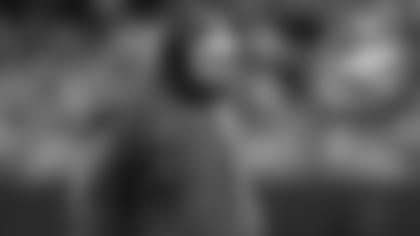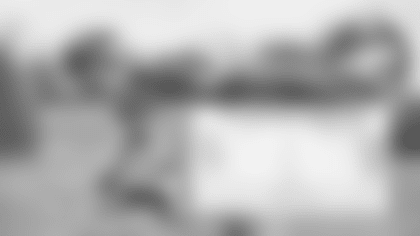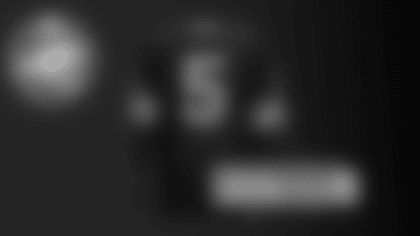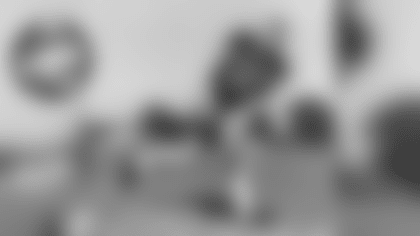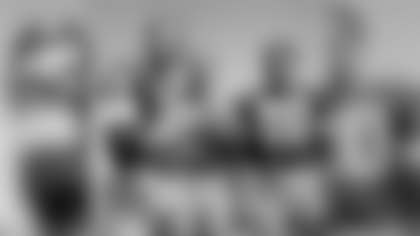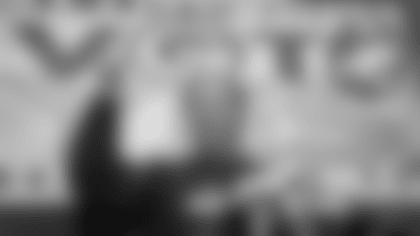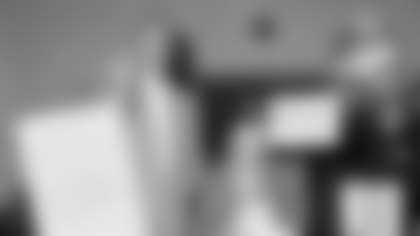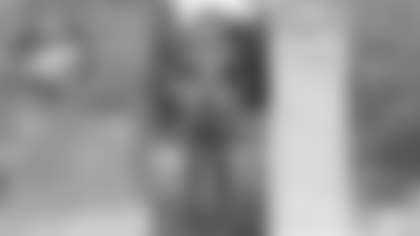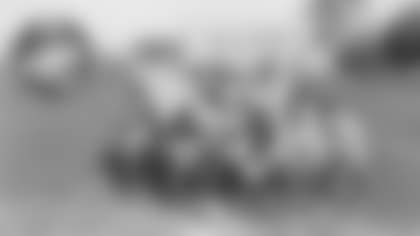Mike from Franklin, WI
During the broadcast of the Packers-Chiefs game, NBC highlighted Mike Holmgren's coaching tree from Green Bay and the graphic said that from 1997-98, Andy Reid was "Quarterbacks Coach/Assistant Head Coach for the Packers." Is that true? I don't see anything in the old media guides confirming that.
The Packers never listed Reid as an assistant head coach in their media guides or anywhere else those years, but Mike Holmgren designated him as a "supervisor" on offense to prevent him from taking the offensive coordinator position at San Francisco under Steve Mariucci or any other job as an assistant coach without Holmgren's permission.
So, I would say no, Reid wasn't an assistant head coach with the Packers. Holmgren simply gave him the designation of "supervisor" out of fear that he could lose both Reid and offensive coordinator Sherm Lewis in the same year. Lewis was frequently mentioned as a head coaching candidate. Reid's promotion to quarterbacks coach also coincided with San Francisco hiring previous Packers quarterback coach Marty Mornhinweg as offensive coordinator.
Even Ron Wolf, general manager at the time, told me this week that he was not aware of Reid serving as an assistant head coach.
We're maybe dealing here with semantics and a technicality, but in the context of history, Reid didn't hold the title of assistant head coach. I make the same point about Vince Lombardi when he was hired as head coach of the Packers in 1959. He had been offensive backfield coach of the New York Giants and ran the offense, but to refer to him as offensive coordinator of the Giants, as many contemporary writers do, is incorrect. The title of offensive coordinator had not yet been coined in 1959.
(Note: When this was first posted, Christl was unaware of Holmgren giving Reid the supervisor designation.)
Tom from Cedar Rapids, IA
Was Chester Marcol the first soccer-style kicker to play in Green Bay? Who was the last traditional kicker to kick a field goal or extra point in a game?
As a rookie in 1972, Marcol was the Packers' first soccer-style kicker to kick in the regular season. He followed Tim Webster, a conventional kicker who booted field goals of 14 and 24 yards in the Packers' final game of the 1971 season. A free agent from Arkansas, Webster's Packers and NFL career lasted only four games.
However, in 1979 and '80, at the end of Marcol's career, Tom Birney replaced the 1972 NFC rookie of the year for 13 games. Thus, Birney, a native of Scotland and a school teacher in the offseason, would have been the last straight-on kicker to make both a field goal and extra point.
Just as Packers fans under 50 have been spoiled by having two all-time great quarterbacks, Brett Favre and Aaron Rodgers, they also were spoiled by the run of kickers from 1989 through last season: Chris Jacke, Ryan Longwell and Mason Crosby.
During the Packers' 24-season famine from 1968-91, watching the kicking game could be like sitting through a scene from an Alfred Hitchcock horror movie. It also was a facet of the Packers' play during those years that led to some of the most bizarre stories in team history.
The first dreadful stretch started in 1968, following Don Chandler's retirement, and continued through 1971, when the Packers drafted Marcol. Webster, for example, was one of 10 kickers used in a game during those four seasons, and one of more than 40 that the Packers looked at in training camp and rookie camps.
Like many of the Packers' kicking candidates during that period, Webster had dubious credentials. He had been strictly a kickoff specialist – in other words, the backup kicker – at the University of Arkansas. Thus, when he made three of five field goals, including a game-tying 27-yarder at the final gun against the St. Louis Cardinals on Dec. 5, 1971, it was Webster's first field goal since he was a senior in high school in Grove, Okla. The Packers gave Webster a tryout on the recommendation of a fellow student at Arkansas who was a cousin of Zeke Bratkowski.
During his four-game stint, Webster was 6 of 11 on field goals, including 0 of 4 from beyond 30 yards. That was the year the Packers had five kickers in camp four days before the season opener – Lou Michaels, Dave Conway, George Jakowenko, Jeff White and Webster – and three of them ended up kicking in the regular season. Michaels and Conway were the others.
There's no official record of this, but I believe Metro Gerela was the first soccer-style kicker to participate in a Packers training camp. Gerela, who had been working as a cargo supervisor on the docks in Vancouver, Canada, went to camp in 1968. A native of Canada, Gerela had played soccer there but had never kicked a football until about three months before he reported to the Packers' rookie camp.
Following that camp, the late and inimitable Lee Remmel, who was covering the Packers at the time for the Green Bay Press-Gazette, wrote that Gerela had "produced more than a few elevated eyebrows during the Packers' rookie camp this week by consistently launching kickoffs 55 to 60 yards, soccer style, with either foot." Remmel also speculated that Gerela "has to be the first ambilateral kicker to appear on the premises since the late Curly Lambeau and George W. Calhoun organized the team on an August night in 1919."
For the most part, Gerela kicked off with his left foot and kicked field goals with his right foot. "I can kick farther with my left foot and I'm more accurate with my right," he explained to Remmel.
The Packers started training camp with five kickers in contention for the job that year, as well: position players Jerry Kramer and Chuck Mercein; and rookies John Giles, John Farler and Gerela. Three others who had participated in the rookie camp had already been released: Richard Carlberg, Ingmar Kauffeldt and Mladen Sola.
Gerela was cut July 28, five days before the Packers opened their preseason against the College All-Stars.
While none of the six kicking specialists they signed that year ever kicked in an NFL game, worse yet, was who the Packers didn't sign. That was the year they failed to offer a contract to Tom Dempsey, who had kicked for their minor league team in Lowell, Mass., the previous season and had written them during the offseason requesting a tryout. Two years later, with the New Orleans Saints, Dempsey set an NFL record with a 63-yard field goal.
Additionally, it was in 1968, with the Packers on their fourth kicker in nine games, that coach Phil Bengtson enlisted Bill Kiss, sports director of an Appleton radio station whose obsession was studying the art of kicking, to serve as a volunteer kicking coach.
The Packers' kicking game became a disaster again in the late 1970s, when Marcol was dealing with injuries and personal problems. That was when Birney filled in for him and missed seven extra points during the 1979 and 1980 seasons, along with converting only 6 of 12 field goals in his second season.
Then there was the 1988 season, when the Packers again went through four kickers – Max Zendejas, Dale Dawson, Dean Dorsey and Curtis Burrow – who missed a total of six extra points and combined for only 13 field goals in 25 attempts, including 3 of 12 from beyond 40 yards.
The failures of those four also led to maybe the most bizarre kicking story of all, at least in Packers history.
It unfolded on Dec. 1, 1988, 13 games into the season, when Bob Milkie, coach of the Racine Raiders semipro team, held a mock tryout in the Milwaukee County Stadium parking lot for the Packers' kicking job. Art Kabelowsky covered the tryout for the Racine Journal Times and reported that nearly 100 wanna-be-Packers kickers showed up.
Kabelowsky wrote that one participant kicked barefoot on the cement and in 21-degree temperatures, and another kicked with crutches. Randy Gehrig of Menomonee Falls, Wis., was the one who showed up on crutches, believing he might be the perfect candidate. "I've seen how the Packers' kickers do it," he said. "The idea is to miss, right?" Lisa Koenings, then 24 of Milwaukee, said she wasn't even an avid football fan but thought what the heck? "I think my grandmother could do better than (the Packers' kickers)," she had concluded.
The event was sponsored by radio station WKTI of Milwaukee and Bell Ambulance. First prize was a Packers uniform, along with tickets, expense money and a ride in an ambulance to the team's next game in Detroit.
Chuck from Richfield, WI
First off, anyone seeking the perfect holiday gift for their Packer fan should buy "The Greatest Story in Sports" four-volume set. I've now read it twice. Thank you, Cliff. My two questions pertain to assertions by authors Bruce Nash and Allan Zullo in their 1986 book "The Football Hall of Shame." They wrote that Curly Lambeau took a wrong turn at the Polo Grounds during halftime of the NFL Championship Game on Dec. 11, 1938, and inadvertently locked himself out of the stadium, thereby contributing to the loss to the Giants. They also wrote that the Packers were shut out by the College All-Stars on Sept. 1, 1937, in part due to Lambeau debuting new synthetic jerseys that didn't breathe properly and caused players to pass out in the heat. They sound quite interesting, but I really would like to know if the stories are factual or not.
First, thanks for the plug about our book.
As for your questions, I'll start with two reminders from "The Greatest Story." First was what Remmel told me about Lambeau: "He was a congenital liar. Cripes! He'd lie to your face and you knew he was lying and he'd still lie to you and make you like it because he was so good at it." The other was longtime Philadelphia pro football writer Hugh Brown's description of Lambeau as a "facile yarn-spinner."
Let's start with the 1938 title game. From what I can determine that story first surfaced in 1943, which according to Nash and Zullo would have been five years after the fact. However, when Raymond Johnson, sports columnist for The Nashville Tennessean, wrote a column about the incident on Nov. 30, he said it had happened that season, when the Packers beat the Giants, 35-21, at the Polo Grounds.
It took Johnson more than 10 mostly long paragraphs to tell the story, but here is a summary with selected sentences. Keep in mind, there were times during Lambeau's reign as head coach that he watched games from the press box.
"(Lambeau) felt pretty good when he left the press box a little more than three and a half minutes before the half. … The crowd, which numbered something like 46,000 already had begun to move on its way to the concession stands. Curly found the going a little difficult. He speeded up and jostled fans. … Long before he reached the lower deck, the gun sounded for the half. … Despite heroic efforts, Lambeau was carried with (the crowd) like an empty barrel caught by the ocean waves. More than five minutes of the halftime intermission had elapsed before Curly reached the broad expanses under the stands where he raced to the Packers' dressing room.
"He grabbed the knob but found the door was locked. He pounded on it but received no answer. He kicked it but silence from within greeted him. Unable to get in, Lambeau hurried out on the field. He figured he could go up to the dressing room that way. He rushed up an aisle that led to the boxes. When he peered over the edge of one of the boxes, he changed his mind, for it was about 12 feet to the ground. He was afraid to jump that far. … By this time Lambeau was the picture of boiling frustration. Only about five minutes remained until time for the teams to return to the field. The crowd was coming back to its seats. But Curly didn't give up. He must see his boys: he must talk with them.
"Lambeau rushed outside the park, hoping that he might get to see the Packers. He peeped into the window of what he thought was Green Bay's dressing room. But he heard the beaming voice of Stout Steve Owen, the Giant coach, and he moved on. He then came to another window and then heard the voice of Red Smith, his righthand man … he yelled but got no answer. He kept yelling until he attracted the attention of a policeman.
"'I'm the Green Bay coach,' Lambeau told the cop. … 'I'm locked out. This is our dressing room – up there. Boost me up on your shoulders so I can talk to the boys for a minute.' Lambeau sold the policeman a bill of goods, for he hoisted the 200-pound Lambeau on his shoulder so he could see in the dressing room. … 'Red,' Curley(sic) panted as the policeman wobbled. 'Red, start the lineup that started the game.' Then the cop and Lambeau went down in a heap. That was the extent of Lambeau's halftime speech and it must have been sufficient, for the Packers bowled over the Giants."
I chose to ignore that story and numerous other Lambeau tales in the "The Greatest Story in Sports" because they were usually first shared long after the fact, and versions would constantly change over the years.
On the other hand, Nash and Zullo, as you noted, bought into the story, as did David Zimmerman in his 2003 biography, "Curly Lambeau: The Man Behind the Mystique," although his story line was somewhat different and he, too, tied it to the 1938 title game.
In summary, I would have no idea if even parts of that story were true or what year it would have taken place, so I'll let you, the readers, decide if it sounds more like a "spun yarn" or a true story.
As for the College All-Star Game, played Sept. 1, 1937, it was without question hot and humid. Kickoff at Chicago's Soldier Field was at 8:20 p.m. (Chicago time), with the temperature between 77 and 79 degrees, and the humidity over 80 percent.
So, yes, it was stifling – but for both teams. And, according to newspaper accounts of the day, the Packers tried to prepare for the weather in advance, maybe even more so than the All-Stars.
On March 18, 1937, the Press-Gazette ran a photo of Lambeau holding one of the Packers' newly ordered myrtle green and gold jerseys made of jockey satin. But then on Aug. 31, more than five months later, the Press-Gazette reported that because the All-Star Game forecast called for extreme heat, the Packers had placed a special order with Wilson Brothers, a shirt factory in Chicago, for "a new set of lightweight green jerseys" that would be used only against the College All-Stars and likely only in the second half. "The men will change into them from their dripping uniforms at the intermission," the Press-Gazette noted.
That same night, The Milwaukee Journal reported that the Packers had stopped in Milwaukee on their way to Chicago and that "before they left (Green Bay) they bought a complete set of lightweight jerseys which will be worn in case of extreme heat."
Following the Packers' 6-0 loss, the Journal reported that a number of players had lost significant weight over the course of the game. Among them, Packers tackle Lou Gordon had lost 20 pounds, while tackle Ed Widseth of the All-Stars had lost 14.
Lambeau also wrote a sidebar for the Journal, where he said, "I never felt so sorry for one of my teams as I did for this one and the scene in the dressing room between halves was something I shall never forget. It was up around 118 or 120 in the small, poorly ventilated room when the boys came in dripping wet and all fagged out, and for the first time I didn't have the heart to bawl anybody out."
That said, Lambeau didn't use the heat as an excuse for the loss. He blamed it on All-Star back Sammy Baugh, "the greatest passer we have ever faced;" the coaching of Gus Dorais, a former teammate of Knute Rockne at Notre Dame, and his staff; and the Packers' failure to score in the second quarter on two downs from the 2-yard line, which he blamed on the play selection.
Sounds to me like the uniform story might have grown into a convenient down-the-road excuse for the Packers becoming the first NFL team to lose to the All-Stars. But, again, I'll let you, the readers, decide.



